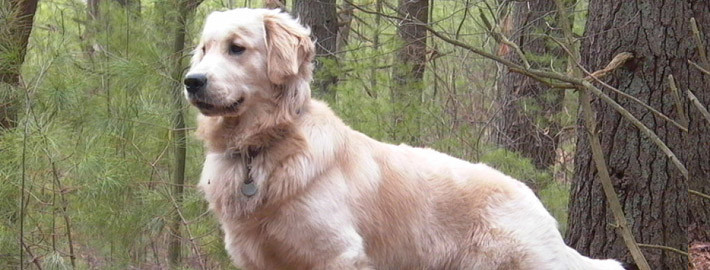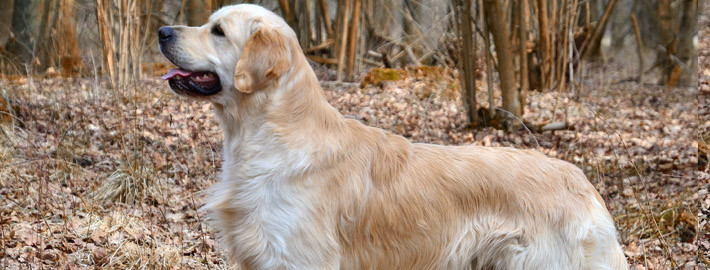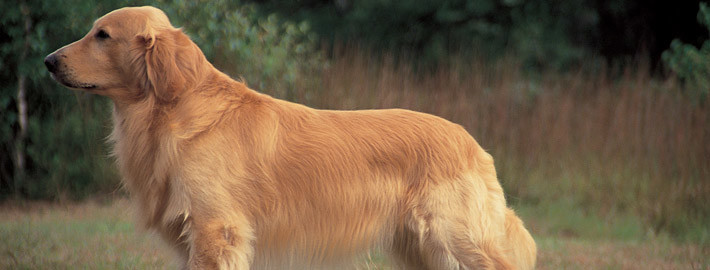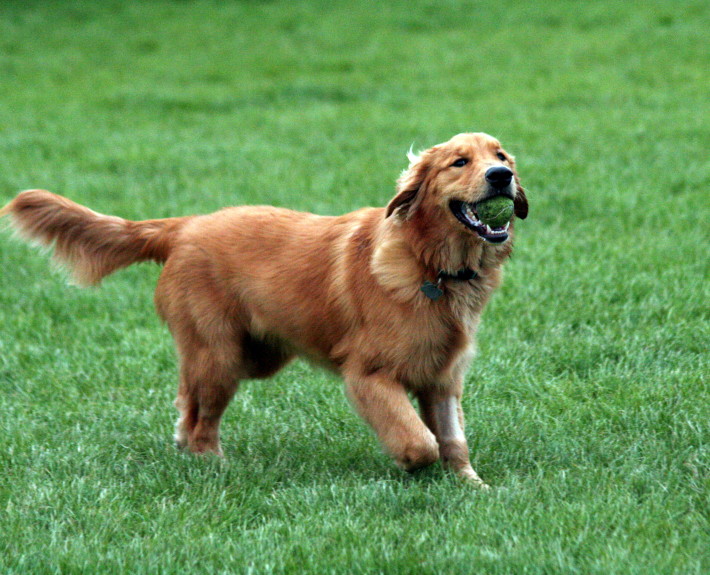GOLDEN RETRIEVER – Everybody’s Friend
What makes the Golden Retriever Unique?
Native to the United Kingdom, more specifically England and Scotland, these dogs make wonderful pets for active households and great companions for children.
Breed Groups
Page Contents
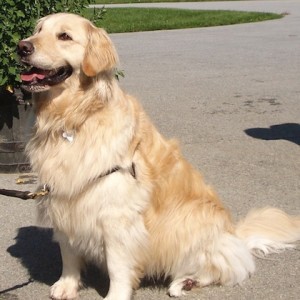
Is the Golden Retriever Right For You?
These dogs are known to be smart, obedient, well-mannered, and excellent with people. While Golden Retrievers make acceptable watchdogs, they enjoy the company of human beings far too much to make effective household guardians. These dogs are also quite active and need lots of exercise as a result. Although they can live outdoors, these dogs would probably prefer to sleep inside with their families.
Golden Retrievers typically should be brushed a few times on a weekly basis to keep households from being covered with fur. It is also a good idea to regularly clean a dog’s teeth to prevent bad breath and health problems from occurring.
In 5 Words
- Reliable
- Kind
- Trustworthy
- Friendly
- Confident
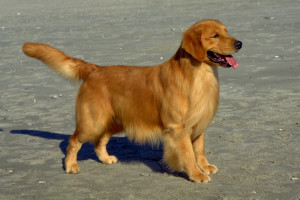
Characteristics
Learn About the Golden Retriever
Description
General Description
The Golden Retriever is a medium to large size member of the sporting dog class. These athletic canines can easily cart large game for long distance over varied terrain. Their length is slightly greater than their height. However, North American strains of dogs may be somewhat taller than their British contemporaries. A wide head with a tapered muzzle and definite stop can be found on these dogs. Members of this breed should have black or brownish black noses and sizeable dark brown eyes. Their teeth should have a scissor bite. Golden Retrievers also possess closely hung, short ears. The tips of these appendages should barely cover the eye when they are drawn forward. They also have feathered tails with a thick base. Although members of this breed possess dewclaws, this feature may be removed if desired. These dogs should move smoothly and at a good pace.
Size
Males of this breed stand approximately 23 to 24 inches (56 to 61 centimeters) at their withers while female dogs are slightly shorter at 21.5 to 22.5 inches (51 to 56 centimeters) tall. Female Golden Retrievers are also weigh an average of 5 pounds less than their male counterparts with the weight averages being 65 to 75 pound 29 to 34 kilograms) for males and 60 to 70 pounds (27 to 32 kilograms) for female dogs.
Coat
Golden Retrievers have the same color coat that their name implies but the shade can range from light cream to dark gold in hue. Their thick double layered fur is also water-resistance. The outer layer may be either straight or wavy, depending on the individual dogs, but all members of this have a soft undercoat as well. These dogs also have feathering on their legs, necks, tails, and underbellies.
Short History of the Golden Retriever
Developed in the Scottish borderlands around the 1850s, the Golden Retriever was designed to be able to hunt both waterfowl and land dwelling game birds. Varieties existed for one purpose or the other but the local terrain required a dog that could perform both tasks. Therefore the best hunting dogs of both types were subsequently crossed to form a new breed.
The original Lord Tweedmouth further helped speed things up when he crossbreed his yellow Wavy-coated Terrier to a Tweed Water Spaniel, a type of dog which is now extinct. This pairing produced four puppies that went on to become excellent hunters. His breeding program largely incorporated dogs of the same type as the two original members but at some later period, Irish Setter, Bloodhound, and St. John’s Water Dog were each introduced to the mix. While the gentleman’s efforts did much for the breed that was to become the Golden Retrievers, it is likely that similar varieties existed even before his time.
These dogs were originally shown as in a miscellaneous category for flat coated retrievers but obtained their own official recognition in 1913. Although the breed had made their way over to the States at an earlier time, the first known Golden Retriever to do so registered with American Kennel Club in 1925. During the decades that followed, members of this breed proved their usefulness in the field as hunting dogs and also as family pets. It is no surprise that Golden Retrievers remain one of the most popular dog breeds around the world to this day.
Temperament
It is for good reason that Golden Retrievers are commonly seen as a family pet. Members of this breed seemingly showcase the best canine traits and abjure the more negative aspects of dog ownership. These dogs are known to be smart, obedient, well-mannered, and excellent with people. While Golden Retrievers make acceptable watchdogs, they enjoy the company of human beings far too much to make effective household guardians. These dogs are also quite active and need lots of exercise as a result. Although they can live outdoors, these dogs would probably prefer to sleep inside with their families.
It goes without saying that members of this breed love hunting and retrieving. They are also fond of carting around materials in their mouths. Golden Retrievers also possess excellent noses that allow them to successfully track downed birds and work narcotics dogs.
Caring for Your Golden Retriever
General Health
Born in litters of 5 to 10 puppies, Golden Retrievers live an average of about 11 years. Health concerns for members of this breed include dysplasia, hypothyroidism, subaortic stenosis, seizures, tumors, and eye disorders. Skin conditions and types of cancers are also known to be problematic for these dogs. Routine tests during annual checkups are a pet owner’s best way of preventing ailments from getting past the point that they are treatable.
Care
Daily
About an hour of exercise per day is recommended for members of this breed. This time can be broken up into smaller intervals or undertake all at once. These dogs enjoy walking but may prefer jogging or running beside a bicyclist during their daily excursions. Lively games of fetch are another favorite breed pastime. Golden Retrievers also need to be brushed on a daily basis at times when the dogs are shedding.
Weekly
Golden Retrievers typically should be brushed a few times on a weekly basis to keep households from being covered with fur. It is also a good idea to regularly clean a dog’s teeth to prevent bad breath and health problems from occurring.
Monthly
Pest prevention medications should be given to these dogs on a monthly basis.
Grooming & Bathing
These dogs will need to be rinsed off with clean water any time they decide to take a swim. It is also a good idea to make sure their ears are cleansed with a vet approved product after taking a dip to help keep dogs from getting infections. Their nails should also be trimmed as needed.
Exercise & Training
As a whole, these dogs are patient, intelligent, and easily taught. Most Golden Retrievers excel at obedience training. However, their busy personalities can sometimes keep them from paying attention issues during lessons. Golden Retrievers should also walk beside their human companions rather than led them when they are out and about. This procedure helps prevent the dogs from viewing themselves as the leader of the group. Owners should likewise note that members of this breed who are not appropriately exercised may be prone to hyper or destructive behaviors.
Golden Retriever Picture Gallery
Click here to add your own text

